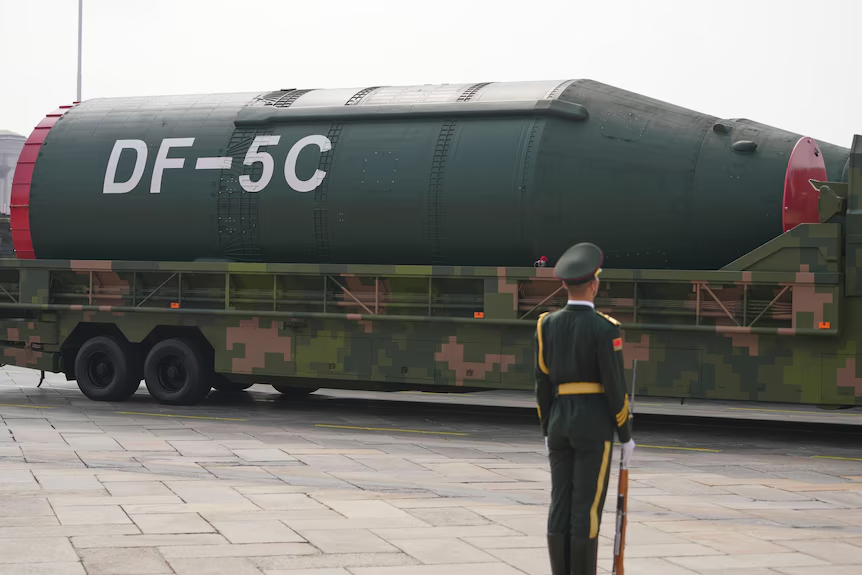China Showcases DF-5C Missile at V-Day Parade: A New Era of Strategic Deterrence

China unveiled its latest intercontinental ballistic missile, the DF-5C, during the grand V-Day military parade in Beijing. The event marked the 80th anniversary of victory in the War of Resistance Against Japanese Aggression and the World Anti-Fascist War. The missile’s debut highlights China’s growing emphasis on advanced strategic deterrence while reaffirming its long-standing defensive nuclear policy.
Unprecedented Global Reach
The DF-5C is a new-generation, liquid-fueled intercontinental ballistic missile (ICBM) capable of striking targets across the globe. With a reported range of over 20,000 kilometres, it places virtually every corner of the Earth within its operational reach. Analysts suggest that this capability significantly strengthens China’s nuclear deterrence posture, ensuring credible retaliation against any potential nuclear threat.
Six Defining Features of the DF-5C
Missile technology expert Professor Yang Chengjun outlined six key innovations that set the DF-5C apart from its predecessors:
- Modular Transport System – The missile is carried in three sections, allowing for faster launch preparation and streamlined mobility compared to earlier DF-5 variants.
- Intercontinental Counterstrike Capability – Its reach ensures the ability to launch counterattacks against global adversaries.
- Flexible Launch Methods – The DF-5C can adapt to multiple launch environments, increasing operational versatility.
- Hypersonic Flight Speed – Its velocity makes interception nearly impossible for existing missile defence systems.
- MIRV Technology – The missile carries Multiple Independently Targetable Reentry Vehicles (MIRVs), which may include nuclear or conventional warheads as well as decoys to overwhelm missile defence networks.
- Precision Guidance – Integrated with China’s BeiDou satellite navigation system, the missile achieves high accuracy even at maximum range.
Strategic and Political Significance
The DF-5C represents a major step in China’s modernization of its strategic arsenal. While technologically advanced, Beijing maintains that its nuclear doctrine remains consistent:
- Defensive in Nature – China continues to adhere to a “no first use” policy, pledging never to launch a nuclear strike unless attacked first.
- Minimal Deterrence – The government emphasizes keeping its arsenal at the minimum level necessary for security, rather than pursuing numerical parity with other nuclear powers.
- Symbol of Resolve – The missile’s public display demonstrates China’s determination to protect sovereignty, deter external threats, and promote eventual global nuclear disarmament.
Broader Context of the Parade
The V-Day parade was more than just a showcase of military hardware—it was also a symbolic moment. President Xi Jinping used the occasion to declare that China’s national rejuvenation is unstoppable, linking the country’s past sacrifices to its current rise as a global power.
By featuring the DF-5C, China sought to project both strength and restraint: a modernized nuclear deterrent combined with a reaffirmation of defensive strategy.
Conclusion
The debut of the DF-5C missile underscores China’s progress in advanced missile technology and its commitment to maintaining credible deterrence in a shifting global security environment. While its capabilities place the entire world within range, Beijing’s continued adherence to no-first-use reflects a balancing act between strength and stability.
The DF-5C is not only a technological milestone but also a political statement: China will defend its sovereignty, safeguard its future, and position itself as both a military and moral actor on the global stage.
Source: Daily CPEC


